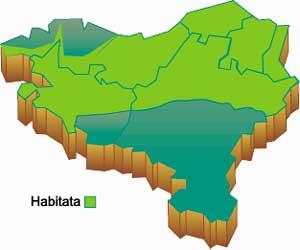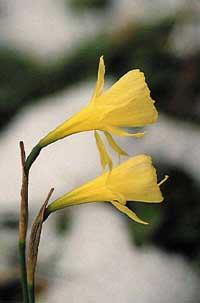Winter flower: Lilipa

In winter there are pretty flowers, and proof of this is the lilip. At the end of January, sometimes in the snow, they begin to dress in grass and yellow. It extends from the slopes of the sea to the meadows and slopes of our mountains (Gorbeia, Hernio, Aiako Harria, Urbasa,...), a beautiful plant in which the meadows and heathlands mentioned above are for her habitats of great interest.
This lilypa is an endemic plant of the Atlantic area of France/Iberia that, although it appears in several areas of the south, is mainly limited to areas of Atlantic influence, with humid, acidic and siliceous soils of great interest.

This plant is usually of very different sizes (10-30 cm), but it is easy to identify if we look at its simple flower. This funnel-shaped flower tends to be kept more or less horizontally by the stem. Its yellow color can have different tones, with weak smell. Stamens inside the floral crown and outer pistil. The leaves are usually intense green, very fungal, almost cylindrical and protruding from a small turbot (from its root) 2-4. It should be noted that these rodaballos are somewhat poisonous.
This fascination was cited in the Stone of Aia in 1861, and today we can see it in the same place. According to the pharmacists of our environment, all the Narcissus bulbocodium that appear in Euskal Herria must carry the citrinus subspecial. The truth is that within this genus botanists have difficulty determining some species, since there are hybridizations between species, also using diverse species as ornamental flowers.
In Europe about 40 species are known, of which 15 appear in the Basque Country (including 2 hybrids). Most plants are endemic of different extensions and if we once again consider studying this genus.
Technical information Lilip Family: AmarilidazeosSpecies: |





